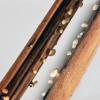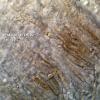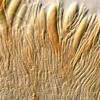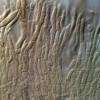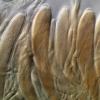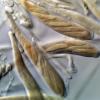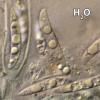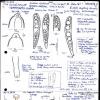
15-12-2025 15:48
 Danny Newman
Danny Newman
Melanospora cf. lagenaria on old, rotting, fallen

15-12-2025 15:54
 Johan Boonefaes
Johan Boonefaes
Unknown anamorph found on the ground in coastal sa

15-12-2025 21:11
 Hardware Tony
Hardware Tony
Small clavate hairs, negative croziers and IKI bb

15-12-2025 07:09
 Danny Newman
Danny Newman
indet. Rutstroemiaceae sp. on unk. fallen leavesMc

15-12-2025 07:05
 Danny Newman
Danny Newman
Pseudosclerococcum golindoi (det: Zotto)near Cosb

15-12-2025 11:49
 Danny Newman
Danny Newman
ITS sequences from the following two collections B

15-12-2025 12:34
 Danny Newman
Danny Newman
indet. Rhytismataceae on oak leafnear Purchase Roa

09-12-2025 12:06
 Andgelo Mombert
Andgelo Mombert
Bonjour,Je recherche l'article concernant Hypobryo
Hymenoscyphus (?) on Dryopteris dilatata
Chris Yeates,
16-11-2014 15:05
 Bonjour tous
Bonjour tousYesterday I collected a small (0.5mm maximum) discomycete on dead fronds of Dryopteris dilatata. In the field I suspected it might be chrysostigmum or campanuliformis (various authorities placing these in a range of genera!). But once home it was clearly neither.
Asci were IKI+ bb, and although I did not see croziers, they had the characteristic V-shaped bases which would suggest it did have croziers.
Asci were 8-spored and the spores were strongly inaequilateral, mostly scutuloid (no cilia), 21.1-22.7 x 3.6-4.2µm.
Paraphyses were narrow, multiseptate, forming almost a textura porrecta.
Marginal cells barely widening, and with clumps of golden-coloured cells (similar to what I think I have seen in images of Hymenoscyphus epiphyllus ?).
I always suspect that fungi on ferns are more likely to be restricted to those plants, and not plurivorous, but . . . . any suggestions / help would be welcome. (Images in IKI unless stated otherwise).
Cordialement
Chris
Hans-Otto Baral,
16-11-2014 16:21

Re : Hymenoscyphus (?) on Dryopteris dilatata
Hi Chris
you don't have obs. on living paraphyses in water? Also the spores are rather suboptimum concerning vital state. The golden-yellow marginal cells are due to a colour change of VBs that were undoubtedly present also in the paraphyses. The presence of croziers would be exceptional in species with scutuloid spores, and would exclude banal species such as H. scutula or H. vitellinus. I recommend this to look in Congo Red.
Zotto
you don't have obs. on living paraphyses in water? Also the spores are rather suboptimum concerning vital state. The golden-yellow marginal cells are due to a colour change of VBs that were undoubtedly present also in the paraphyses. The presence of croziers would be exceptional in species with scutuloid spores, and would exclude banal species such as H. scutula or H. vitellinus. I recommend this to look in Congo Red.
Zotto
Bernard Declercq,
16-11-2014 17:21

Re : Hymenoscyphus (?) on Dryopteris dilatata
Hi Chris and Zotto,
I guess this is what I called Hymenoscyphus scutula var.pteridis, the non-ciliate variant of H. scutula ss. str. The species is not at all restricted to ferns. I hesitate to see it as a separate species as I found the absence of spore cilia being the only difference up to now. If accepted as separate species there must be some oldier name for this taxon. Molecular research would be helpfull here.
Bernard
I guess this is what I called Hymenoscyphus scutula var.pteridis, the non-ciliate variant of H. scutula ss. str. The species is not at all restricted to ferns. I hesitate to see it as a separate species as I found the absence of spore cilia being the only difference up to now. If accepted as separate species there must be some oldier name for this taxon. Molecular research would be helpfull here.
Bernard
Hans-Otto Baral,
16-11-2014 17:39

Re : Hymenoscyphus (?) on Dryopteris dilatata
Hi Bernard
I believe that the ascus base would be the first to clarify. I assume your var. pteridis is without croziers? Then, and when it is without setulae, I would consider H. vitellinus as name. The type of that taxon I have studied. But I am not sure of its value.
H. scutula s.l. seems not to be easy, and - incredible - a trustable sequence is wanting so far!
Zotto
I believe that the ascus base would be the first to clarify. I assume your var. pteridis is without croziers? Then, and when it is without setulae, I would consider H. vitellinus as name. The type of that taxon I have studied. But I am not sure of its value.
H. scutula s.l. seems not to be easy, and - incredible - a trustable sequence is wanting so far!
Zotto
Bernard Declercq,
16-11-2014 22:44

Re : Hymenoscyphus (?) on Dryopteris dilatata
Hi Zotto,
Yes, all species mentioned here have no croziers.
According my species concept, H. vitellinus has in average shorter spores and shorter asci (95-115 µm) than H. scutula and its var. pteridis and some spores may have short cilia (1-3 µm long).
H. scutula var. pteridis has spores without cilia, and asci like H. scutula ss. str. (asci in both species up to about 150 µm long).
So Chris should first inform us about presence/absence of croziers and ascus length.
But it could be that Feltgen was wrong by creating its "forma" pteridis and that H. vitellinus is a species with a much larger variability of spore size and asci as well, concept I understood you are favorising.
We all agree that sequencing of all these taxa could help us a lot (but I have the impression that such mostly results in splitting species rather than lumping).
Bernard
Yes, all species mentioned here have no croziers.
According my species concept, H. vitellinus has in average shorter spores and shorter asci (95-115 µm) than H. scutula and its var. pteridis and some spores may have short cilia (1-3 µm long).
H. scutula var. pteridis has spores without cilia, and asci like H. scutula ss. str. (asci in both species up to about 150 µm long).
So Chris should first inform us about presence/absence of croziers and ascus length.
But it could be that Feltgen was wrong by creating its "forma" pteridis and that H. vitellinus is a species with a much larger variability of spore size and asci as well, concept I understood you are favorising.
We all agree that sequencing of all these taxa could help us a lot (but I have the impression that such mostly results in splitting species rather than lumping).
Bernard
Hans-Otto Baral,
16-11-2014 23:04

Re : Hymenoscyphus (?) on Dryopteris dilatata
I see on my drawing of the type of vitellinus that material in M was mostly without setulae but that in S has prominent ones, though being also mostly without. The asci were 85-93 x 9.5-10.5 (in dead state of course). That would be perhaps 100-120 x 11-12 when alive.
You mean living asci?
Yes. Sequencing in Hymenoscyphus yields often very constant data, little genetic variability, and taxa splitting. But usually morphological characters are correlated.
You mean living asci?
Yes. Sequencing in Hymenoscyphus yields often very constant data, little genetic variability, and taxa splitting. But usually morphological characters are correlated.
Bernard Declercq,
17-11-2014 15:28

Re : Hymenoscyphus (?) on Dryopteris dilatata
Living asci, indeed.
Bernard
Bernard
Chris Yeates,
17-11-2014 18:36

Re : Hymenoscyphus (?) on Dryopteris dilatata
No croziers . . . . so a "banal species such as H. scutula or H. vitellinus" ;-)
I am still struck by how small the apothecia are - I assume this is due to the size, and perhaps type, of substratum.
Chris
I am still struck by how small the apothecia are - I assume this is due to the size, and perhaps type, of substratum.
Chris
